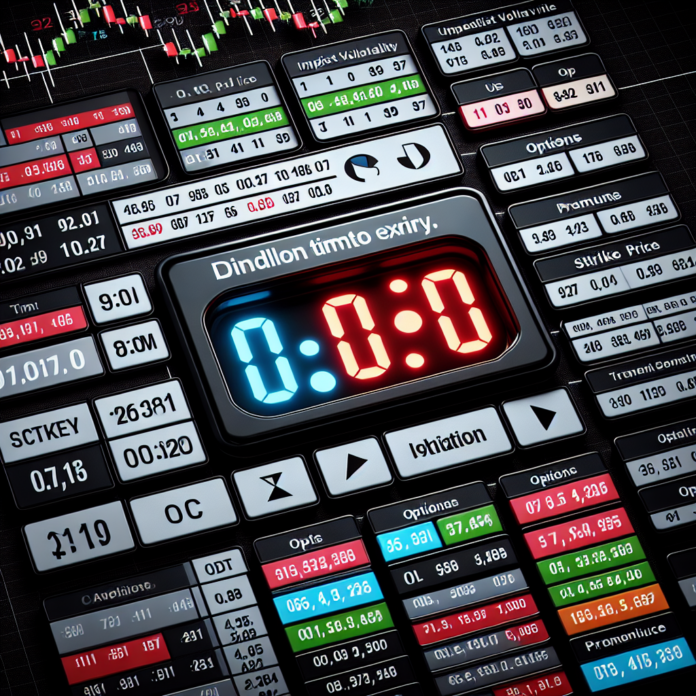Introduction:
Time to expiry and strike price are two crucial elements that define the characteristics of an options contract. The interplay between these two factors can significantly influence the profitability and risk profile of an option trading strategy. As an options trader, understanding how to balance the dynamics of time and price can sharpen your market edge.
Understanding Time to Expiry:
The time to expiry of an option refers to the period within which the option can be exercised. Options are time-decaying assets, meaning their value diminishes as they approach expiry. This decay is not linear – it accelerates as expiry nears, a concept known as “theta decay.” Options with more time until expiry are more expensive, all else equal, due to the higher potential for the underlying asset to move favorably.
For a deep dive into the concept of time decay, the Options Industry Council (OIC) provides extensive educational materials.
Strike Price: The Price Pivot:
Strike price is the set price at which an option can be exercised and is essential in determining an option’s intrinsic value and premium. An option is “in the money” if exercising it would be profitable, and “out of the money” if it would not. Generally, the further out of the money an option is, the cheaper its premium, and vice versa.
Time versus Price: Choosing the Right Strike:
Choosing the right strike price becomes a thoughtful balance between cost and probability of profit. A lower strike price (for calls) or a higher strike price (for puts) increases the odds of an option expiring in the money but requires a higher premium. Alternatively, a strike price far out of the money will be cheaper but with a reduced chance of a profitable outcome.
For current strike price options and trading data, resources like Cboe Global Markets can offer valuable insights.
Longer Term Options: More Than Just Time:
Long-term options, or LEAPS (Long-term Equity AnticiPation Securities), provide an interesting case study in the interplay of time to expiry and strike price. With expiration dates far into the future, the immediate impact of time decay is lessened, allowing for more strategic flexibility. However, their premiums are higher due to the increased time value.
Short-Term Strategies: Strike Price Sensitivity:
For short-term options, the strike price’s proximity to the market price of the underlying asset becomes even more influential due to the increased impact of time decay. Traders need to assess whether the lower premium of an out-of-the-money option outweighs the diminishing time to expiry.
Volatility: The Wild Card in Time and Strike Price Decisions:
Market volatility also plays a critical role in shaping the relationship between time to expiry and strike price. Volatile markets can inflate option premiums due to the higher probability of large price swings, which should be taken into account when weighing expiry times and strike prices.
For market volatility analysis, MarketWatch tracks the Volatility Index (VIX), which serves as a measure of the market’s expectation of volatility.
Conclusion:
The relationship between time to expiry and strike price is nuanced and carries significant implications for options trading strategies. Traders must artfully balance the decaying asset nature of options with the potential profitability of different strike prices. Moreover, the added dimension of market volatility demands adaptability and a thorough understanding of market conditions.
For traders looking to sharpen their strategy in options trading, Tastytrade offers various resources and tools to plan, analyze, and execute trades based on the interplay between time to expiry and strike price.
As you navigate the options market, keep in mind that there’s no one-size-fits-all strategy. Each investor should consider their risk tolerance, market outlook, and investment objectives when aligning the time to expiry with the right strike price. By mastering the dynamics between these two pivotal factors, options traders can enhance their potential for success in an ever-evolving trading landscape.




 AGF-B.CO
AGF-B.CO